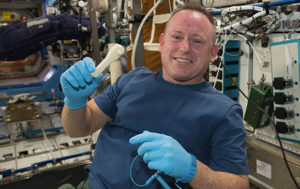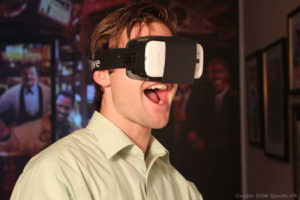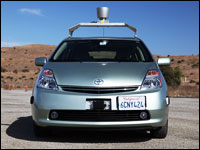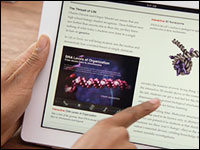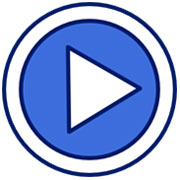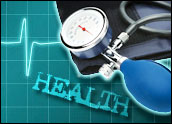
Mobile Health Apps, Part 1: Taking Your Life Into Your Own Handhelds
For years, industry leaders have predicted the Year of Mobile — but that was back when those in the know thought of mobile in terms of a trend. Trends have peaks. Those crests are marked by a “Year Of” label that largely heralds a forthcoming decline.
Mobile will have no peak, despite its growing presence in our daily lives, because it is not a trend. It is pervasive computing in its first incarnation. Mobile technology is so embedded in our psyche and our daily routine that we literally feel vulnerable without it. Therefore, we won’t be; hence, no peak in use — although its form is subject to change.
“Mobile Apps are here to stay; what will change dramatically is our notion of what is a mobile device,” Girish Nair, vice president of business development at DataArt, told TechNewsWorld.
Healthcare apps, in particular, are likely to permanently mesh mobile technologies with our actual physical well-being as surely as a skin graft or coronary stent does.
“The future of healthcare apps will cater to the strengths of the new mobile technology platforms, allowing patients to send doctors a picture, for example — to receive a clinical opinion and guidance without having to venture in for a traditional appointment,” Nick van Terheyden, M.D., CMIO at Nuance Communications, told TechNewsWorld.
“It is also likely that future apps will introduce robust tools for advanced clinical imagery and for decision support,” he added.
For the moment, however, developers are experimenting with just how far an app can go to save or better a human life.
Who’s on First in the App Game
A glance at practically any mobile app market — from iPhone’s to Android’s to GetJar.com, a huge open app store — reveals a bounty of healthcare apps already on the market. However, it isn’t just phone brands and developers making apps widely available — cell carriers are in the mix too. Sprint, for example, is heavily into supporting healthcare apps particularly for practitioners, going so far as to partner with the likes of Calgary Scientific and AirStrip.
Sprint also provides the machine-to-machine connectivity for devices that support fitness (BodyMedia) home health (Ideal Life) and patient tracking (Reflection Solutions). There are many other such apps, and even more on the way.
“Sprint prides itself for being the most open network for developers and partners; in fact, we’ve been pursuing this open strategy for more than four years,” Tim Donahue, vice president of solution sales at Sprint, told TechNewsWorld. “We want to be the first place developers think about when they want to explore a new wireless health solution, whether it be a mobile application or embedded wireless device.”
Sprint opened its M2M Collaboration Center last year to encourage developers and to facilitate integration. Other carriers are following suit. Verizon, for example, announced last month that it will open its Application Innovation Center (AIC) in San Francisco this fall. First revealed at the Verizon Developer Community (VDC) Conference, the San Francisco facility will be connected to Verizon LTE Innovation Center, located in Waltham, Mass., in order “to optimize synergies between development activities at each location.”
Navigating the Healthcare App Universe
There are also groups that specialize only in healthcare apps such as OrganizedWisdom, an expert-driven platform for health and wellness. The company partnered with Xtify (which built apps for Daily Candy) to develop more than 100 health-related mobile apps. Each app will focus on a specific health topic — from dieting to breast cancer — and will constantly serve fresh content such as tweets, articles, Q&As and tips, curated by a network of more than 5,000 health pros including doctors, nurses and patient advocates.
OrganizedWisdom already has 1.5 million online users and recently launched a partnership with Reader’s Digest, but sees mobile as the real prize — connecting the mobile phones of people interested in specific health information with vetted doctors.
OrganizedWisdom’s advisory board includes some powerhouse investors and advisors, such as Jerry Levin (former Time Warner CEO), Esther Dyson (catalyst for health and tech startups), Jason Finger (SeamlessWeb Founder), and Roger Ehrenberg, among others. Current funding is at US$3.1 million, with ETF Venture Fund, Esther Dyson, and a number of other investors leading the series A.
With more than a million apps slated to be on the market by the end of the year, by most accounts, the mobile app market is the fastest growing consumer market ever. Innovative services, such as deep search engine Mobilewalla, are already springing into existence to help you search and sort the bounty of offerings.
There are also search engines built on social media. Appitalism.com, for example, combines a social community with an online store, enabling consumers to discover, discuss and download digital media from a catalog of over 10 million premium apps compatible with a broad range of digital devices including smartphones, tablets, PCs and e-readers.
There’s an App for That… and That… and That Too
For the most part, consumer-oriented mobile healthcare apps are information centric — meaning they provide information to the user as opposed to exchanging information with other parties. This will change soon, as practitioner-oriented apps already exchange information between providers, insurers and labs. It’s relatively simple to add in the patient for much of that conversation.
WebMD, for example is a favorite among physicians. For consumers, there are several great diabetes-focused apps to help in adherence to glucose levels, medication therapies and diet constraints.
“I see these type of apps becoming a mainstay for patient adherence programs and really improving the overall outcomes for those who utilize them,” said Eric Boothe, director of business development in the life sciences division at EarthColor.
“They also open the door for more proactive communication with physicians,” he told TechNewsWorld
On the consumer side, apps range in complexity from the basics (such as the American Heart Association’s free Hands-Only CPR app and instructional video) to the more complex (such as the iHealth Blood Pressure Monitoring System, which involves a special arm cuff, a portable battery-powered dock and either a iPhone or an iPad). In any case, mobile healthcare apps are designed to be easy to use.
There are apps for many specific illnesses and conditions. Those that help monitor diabetes tend to top the popularity list, partly because diabetics are conditioned to check their glucose levels regularly using one device or another. The transition to mobile apps is therefore easier for this group than for many others. Because of this ease of acceptance and the sheer number of diabetic patients, new diabetes apps are coming on the market regularly.
They vary in approaches, however. For example, Myglucohealth uses a specific Bluetooth-enabled meter and cellphone to read blood sugar levels, record them digitally, and even transmit them to a physician.
In comparison, PositiveID’siglucose connects to the patient’s existing glucometer and, using Sierra Wireless’ mobile network, collects, records and transmits a patient’s blood glucose data to caregivers, family members and healthcare professionals in real-time. The company is well-known for its VeriMed technology, the only FDA-cleared, RFID human-implantable microchip that links to a personal health record. Iglucose is the first step in PositiveID’s Wireless Body platform, which would enable a patient’s implanted and external medical devices to communicate with each other, the patient, their physicians, and approved third parties.
Echo Therapeutics is developing its needle-free Symphony tCGM System as a noninvasive, wireless, transdermal continuous glucose monitoring (tCGM) system for use in hospital critical care units and for people with diabetes. A biosensor is affixed to a patient’s abdomen and wirelessly provides the patient’s glucose level every minute to a remote monitor or smartphone.
The device provides visual and audible alarms if the patient’s glucose levels move outside the target range, which can be personalized for each patient. The company has completed six positive pilot trials and will complete another pilot study prior to formal submission to the FDA for approval.
While diabetes-oriented apps tend to lead the pack at the moment, other diseases are similarly monitored and reported by apps, with more under development. Any way you look at it, mobile apps are putting a doctor and medical help in the pockets of millions of people. The result: Traditional healthcare is morphing into an immediate and cheaper convenience.
“When every medical device or instrument can have an IP address and can transmit or receive information, we will see paradigm shifts in the way we manage care,” said Nair. “Access to information and the ability to deliver care will become increasingly independent of location of the patient/provider.”




